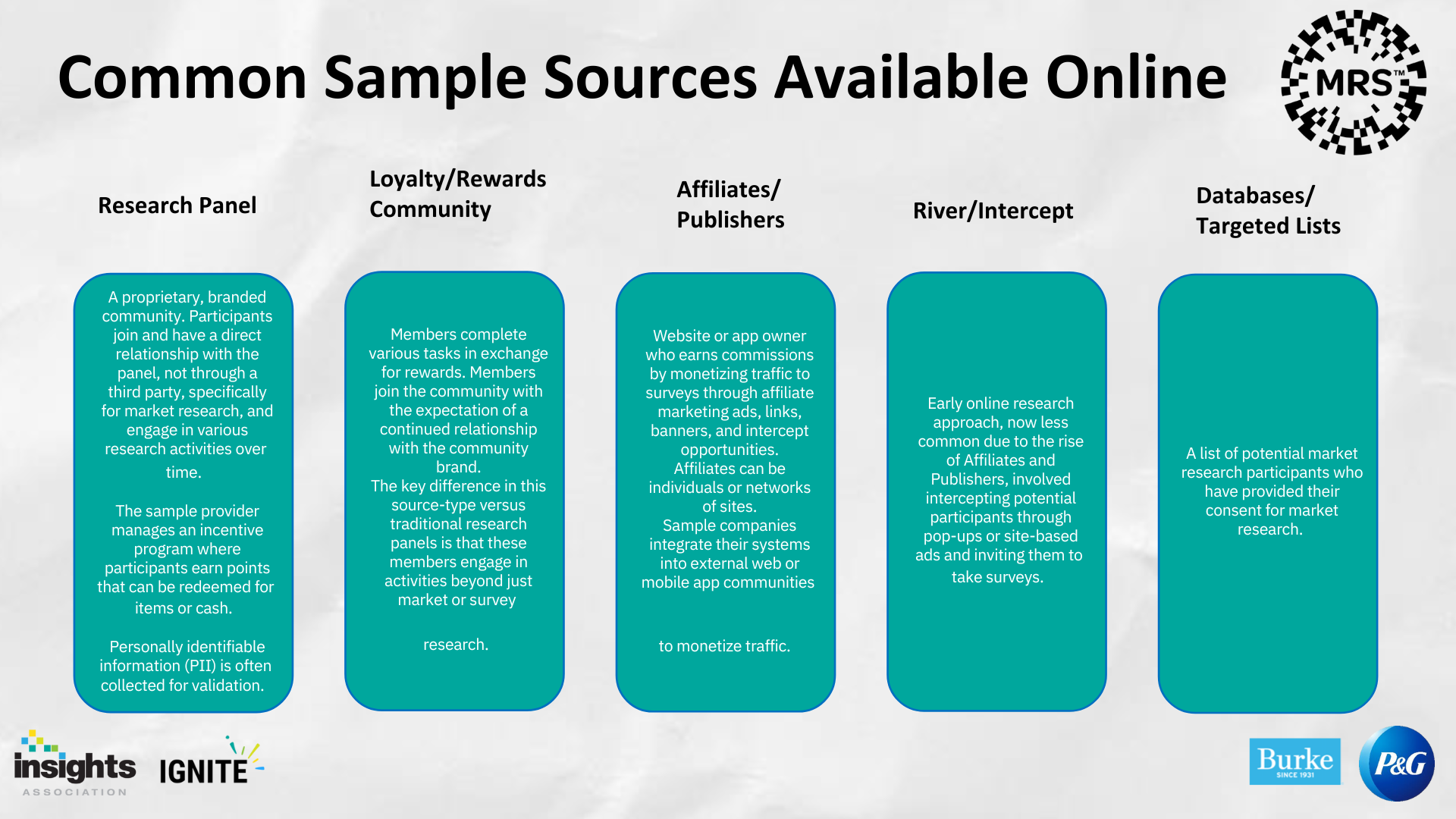From Race to the Bottom to Rise of AI
Each year, the Future Trends webinar gives us an opportunity to pause, reflect, and take stock of where the future of market research is headed. This year’s discussion was especially striking. Artificial intelligence (AI) is no longer a distant prospect on the horizon; it is here, shaping how we work, think, and deliver value.
As with every wave of innovation, AI forces us to reckon with what we’ve learned from the past. The insights industry has already lived through its own growing pains. For years, the “race to the bottom” drove down costs but left behind an enduring problem with data quality. That legacy continues to shape how we approach the work ahead.
The challenge before us now is simple in statement but complex in execution: how do we ensure that new tools like AI serve as a force for higher-quality insights, not just faster and cheaper outputs?
The Legacy of the Race to the Bottom
The story of the last decade in research is, in many ways, the story of a marketplace caught in a cycle of underbidding.
To win projects, companies slashed costs, often at the expense of participant incentives. That decision may have been expedient in the short term, but the long-term consequences were significant.
Participants became fatigued, undervalued, and, in some cases, disengaged altogether. Fraud crept in through the cracks. The result was an erosion of trust in the data itself, the very foundation of our work.
At L&E Research, we saw this problem emerging early and took it seriously. We invested in “research-on-research,” asking participants directly about their experiences, not just with us but across the industry. How did incentive levels affect their willingness to participate? How quickly did they expect to be paid? How did they feel about moderation and engagement styles?
These weren’t academic questions; they were existential.
When participants don’t feel valued, the quality of insights deteriorates. That’s why we aligned ourselves with industry-wide initiatives through the Insights Association and built fraud mitigation into our processes well before it became the industry’s headline concern.
The race to the bottom is part of the research industry’s legacy, but it is not our future. Having acknowledged how we got here, we now have the opportunity to move forward with stronger footing.
Data Quality in the Age of AI
Today, the conversation about speed and cost has been reignited by AI. Procurement departments push for faster, cheaper research. Sales teams feel pressure to deliver. And once again, quality risks being left behind.
However, the tools themselves are not the problem; it’s how we use them. AI can accelerate processes, but it can also strengthen outcomes if we put quality at the center of our applications. The choice is ours.
At L&E, we’ve seen firsthand how AI can be deployed to improve accuracy while also saving time. A recent case study with our CondUX platform is a powerful example. A client asked us to analyze nearly 200 photos submitted by participants. Traditionally, this would have taken a team of humans more than 18 hours to review and categorize. Using CondUX’s object detection capabilities, we reduced the process to just two and a half hours, including setup and quality control.
The time savings alone were impressive, but even more importantly, the AI surfaced errors that the human reviewers had missed. By flagging low-confidence images for human verification, CondUX didn’t replace human oversight; it enhanced it.
This shift is significant. Qualitative research has long relied on asking participants to describe their behaviors and environments. Object detection allows us to observe instead. Rather than asking what’s on a kitchen counter, we can see it directly. Observation has always been at the heart of qualitative work, and AI now gives us new tools to scale it without losing authenticity.
The lesson here is clear: AI doesn’t have to perpetuate the mistakes of the past. If used wisely, it can reverse them. Instead of cutting corners on quality, AI can elevate it.
The Human Factor: Training, Oversight, and Storytelling
Yet even as we embrace new tools, one truth remains unchanged: humans are central to research. AI may be, as one panelist described it, “the best intern you’ll ever have.” But even the best intern still needs a manager.
AI can synthesize information, but it cannot think critically. It does not problem-solve. Left unchecked, it can amplify errors rather than resolve them. The risk of over-trusting AI is the risk of making high-stakes business decisions on faulty insights, a mistake no brand can afford.
That is why human-in-the-loop oversight is non-negotiable. Researchers must continue to bring context, domain expertise, and discernment to every AI-assisted output. AI may help answer “what,” but humans must still interpret “why.”
This balance between technology and humanity is not just relevant for today’s practitioners; it also defines the training of tomorrow’s researchers. Academic institutions play a critical role here. Just as earlier generations learned math without calculators, students today must learn the fundamentals of research without over-relying on AI.
If researchers don’t understand the basics, AI becomes nothing more than a “yes-person,” agreeing, generating, and emulating without questioning. Only those who have mastered curiosity, empathy, and storytelling will know when the machine is wrong, and more importantly, how to use it responsibly.
The future of market research belongs to those who can balance both: the efficiency of AI and the empathy of human interpretation.
Looking Ahead with Optimistic Caution
The insights industry is entering a period of remarkable transformation. Investment in AI and other technologies is accelerating, and the potential to make research faster, more scalable, and more accessible is undeniable.
Optimism must be paired with caution. If we lean too far into speed and cost, we risk repeating the mistakes of the past and recreating the very data quality challenges we’ve worked so hard to overcome.
The way forward is not about rejecting efficiency. It is about balance. AI should help us achieve all three points of the triangle: speed, cost, and quality, without sacrificing one for another. That balance is not easy, but it is possible. And it is necessary if we want our work to remain meaningful, relevant, and impactful.
What gives me confidence is the spirit of this industry. Time and again, researchers have shown the ability to adapt, innovate, and lead. We are not passive recipients of technology; we are active shapers of how it is applied. If we keep people – participants, clients, and researchers – at the center of our work, then tools like AI will not just make us faster or cheaper. They will make us better.
Shaping the Future of Market Research
The future of market research is not defined by technology alone. It is defined by how we choose to use it. The race to the bottom taught us that neglecting participant experience and data quality comes at a high cost. AI gives us the chance to learn from that history and write a different story, one where speed and cost efficiencies are balanced with quality, and where human expertise guides every technological advancement.
At L&E Research, we believe the path forward is not about replacing people but empowering them. With the right balance of tools and talent, the future of market research can deliver insights that are not only faster and more efficient, but also deeper, richer, and more reliable. That is the future we should all be working toward.


















